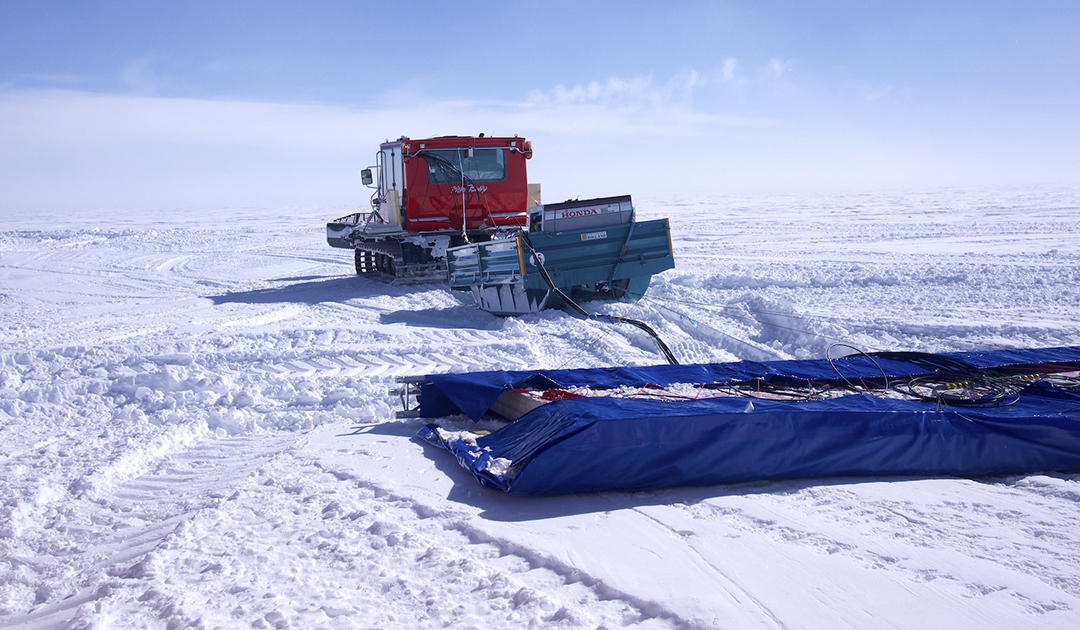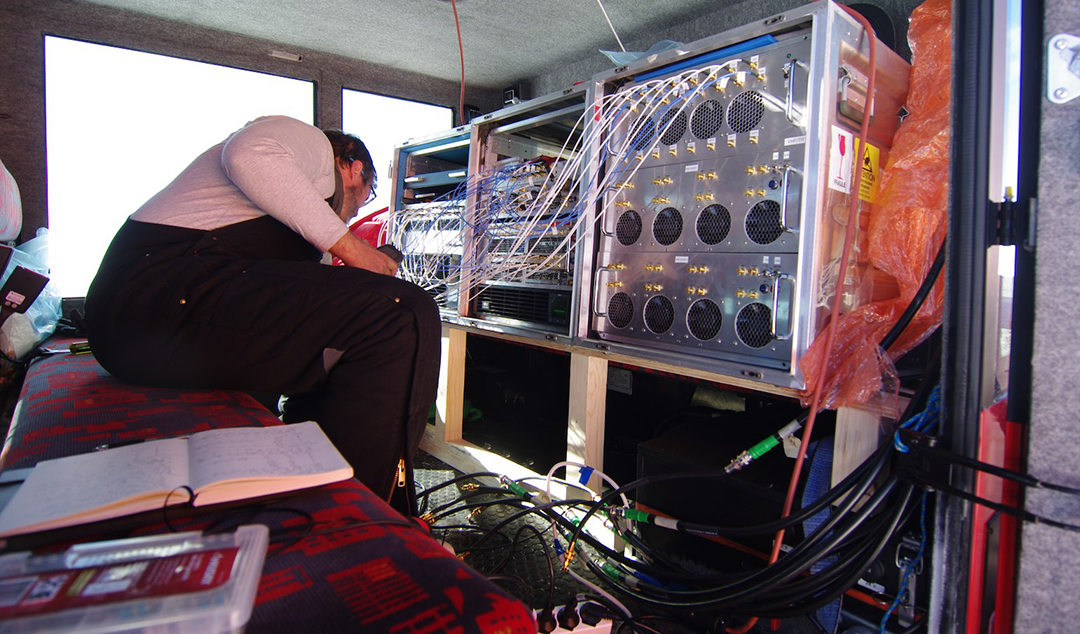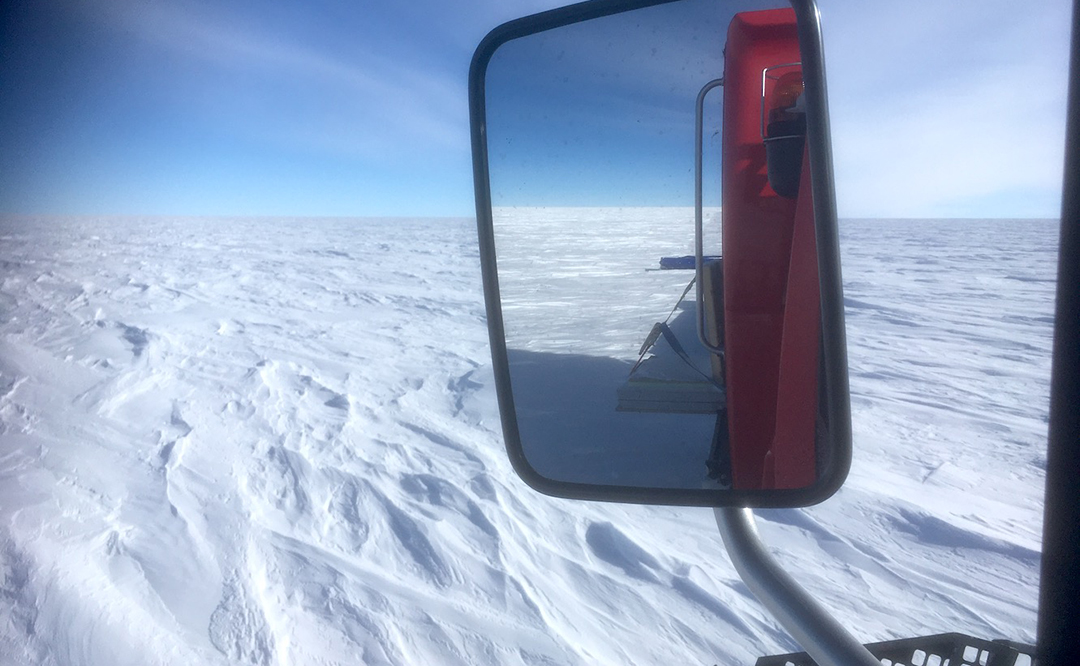
An international team of scientists last week determined the final coordinates for drilling for Antarctica’s oldest ice and began setting up the field camp on the East Antarctic plateau. In deciding exactly where to set the drill, the researchers relied on high-resolution measurement data from a newly developed ice radar, which they had used for the first time in the “Little Dome C” target area at the beginning of December this year. In the region about 40 kilometres west of the French-Italian research station “Dome Concordia”, the East Antarctic ice sheet is about 2800 metres thick. The scientists assume that the ice, which is up to 1.5 million years old, is at a depth of 2550 metres. The aim of the European research project “Beyond EPICA” is to obtain an ice core that will allow the complete reconstruction of the climate history of the past 1.5 million years. So far, only 800,000 years had been explored. The work currently being carried out at the drilling site is initially for preparatory purposes only. The actual deep drilling is scheduled to begin in the Antarctic summer of 2020/21.
Measurement runs with a newly developed ice radar from the US University of Alabama took a decisive step forward in the search for the oldest ice in Antarctica at the beginning of this month. “We were able to look into the East Antarctic Ice Sheet at a much higher resolution than ever before at this depth,” says Prof. Olaf Eisen, glaciologist at the Alfred Wegener Institute, Helmholtz Centre for Polar and Marine Research in Bremerhaven (AWI).
He and AWI colleague Prof. Frank Wilhelms are among the leading scientists in the EU climate research project “Beyond EPICA”, in which researchers from 16 institutions in ten European countries have set themselves the goal of obtaining an ice core whose lower ice layers are ideally up to 1.5 million years old. This would allow researchers to reconstruct climate history for the same time period – that is, for the developmental phase of humans since they started using fire. The ice contains air bubbles from that decade when the snow that fell at that time condensed into ice.
“We have high hopes that this ice core will provide us with a unique opportunity to gather comprehensive information on global climate and greenhouse gas concentrations during the so-called mid-Pleistocene transition, 900 000 to 1.2 million years ago” says project coordinator Carlo Barbante from the Italian Polar Research Institute ISP-CNR. At that time, the cycle in which cold and warm periods followed each other lengthened from 40,000 to 100,000 years. However, the reasons for this are still unknown.

During their preliminary explorations in East Antarctica, the scientists had already identified three possible drilling fields in an area of 10 square kilometres west of the French-Italian research station “Dome Concordia”. With the help of the new radar data, however, they have now succeeded in verifying to within a few tens of metres whether the ice at these three locations is still so cleanly stratified at great depths that a deep borehole can provide valuable results. In addition, the new measurements helped to narrow down the age of the many ice layers stacked on top of each other more precisely. To do this, the scientists used a so-called age-depth model from the University of Grenoble.
Based on this new knowledge, the research team then determined the best possible drilling location. “We have now selected a site where the ice at depth not only has the appropriate age, but almost certainly also undisturbed stratification, which is quite crucial for the success of the project “, explains Olaf Eisen.
This place, called “Little Dome C”, is located about 40 kilometers away from the research station “Dome Concordia”. The East Antarctic ice sheet is about 2800 meters thick here. In order to reach the 1.5 million year old ice layer, the team will probably have to penetrate to a depth of 2550 metres. The concrete preparations for this have already begun on Monday of this week. “We are now setting up the drilling site and, at the beginning of the next Antarctic summer season, we will drill a hole about 150 metres deep, which will then be lined with fibreglass pipes. We will then use this casing pipe as the starting point for the actual deep drilling,” explains AWI glaciologist Frank Wilhelms.

The drilling and the first subsequent analyses of the gases trapped in the ice are expected to be completed in six years. This is the duration of the European Commission grant, which is funding the “Beyond EPICA” project to the tune of 11 million euros. The drilling was preceded by three years of exploration work within the framework of the project “Beyond EPICA – Oldest Ice”, which was coordinated by the AWI. During this time, scientists had been surveying the East Antarctic Ice Sheet primarily from aircraft, supplemented by extensive work on the ground.
Incidentally, the title of the current drilling project is derived from an ice core drilling project in which a European consortium drilled exactly 3270 metres deep into the East Antarctic Ice Sheet between 1996 and 2004 (EPICA – European Project for Ice Coring in Antarctica). One of the two ice cores recovered in the process revealed extensive information on the climate history of the past 800,000 years. In the new project “Beyond EPICA”, the researchers now want to go far beyond this boundary.
In addition to the Italian Polar Research Institute and the German Alfred Wegener Institute, Helmholtz Centre for Polar and Marine Research, the following main partners are involved in the project:
- British Antarctic Survey, Great Britain
- Institut polaire français Paul-Emile Victor (IPEV), France
- Centre national de la recherche scientifique (CNRS), France
- Agenzia nazionale per le nuove tecnologie, l’energia e lo sviluppo economico sostenibile (ENEA), Italy
- Norsk Polarinstitutt (NPI), Norway
- Stockholm University, Sweden
- University of Bern, Switzerland
- University of Copenhagen, Denmark
- University of Brussels, Belgium
Source: Alfred Wegener Institute for Polar and Marine Research





